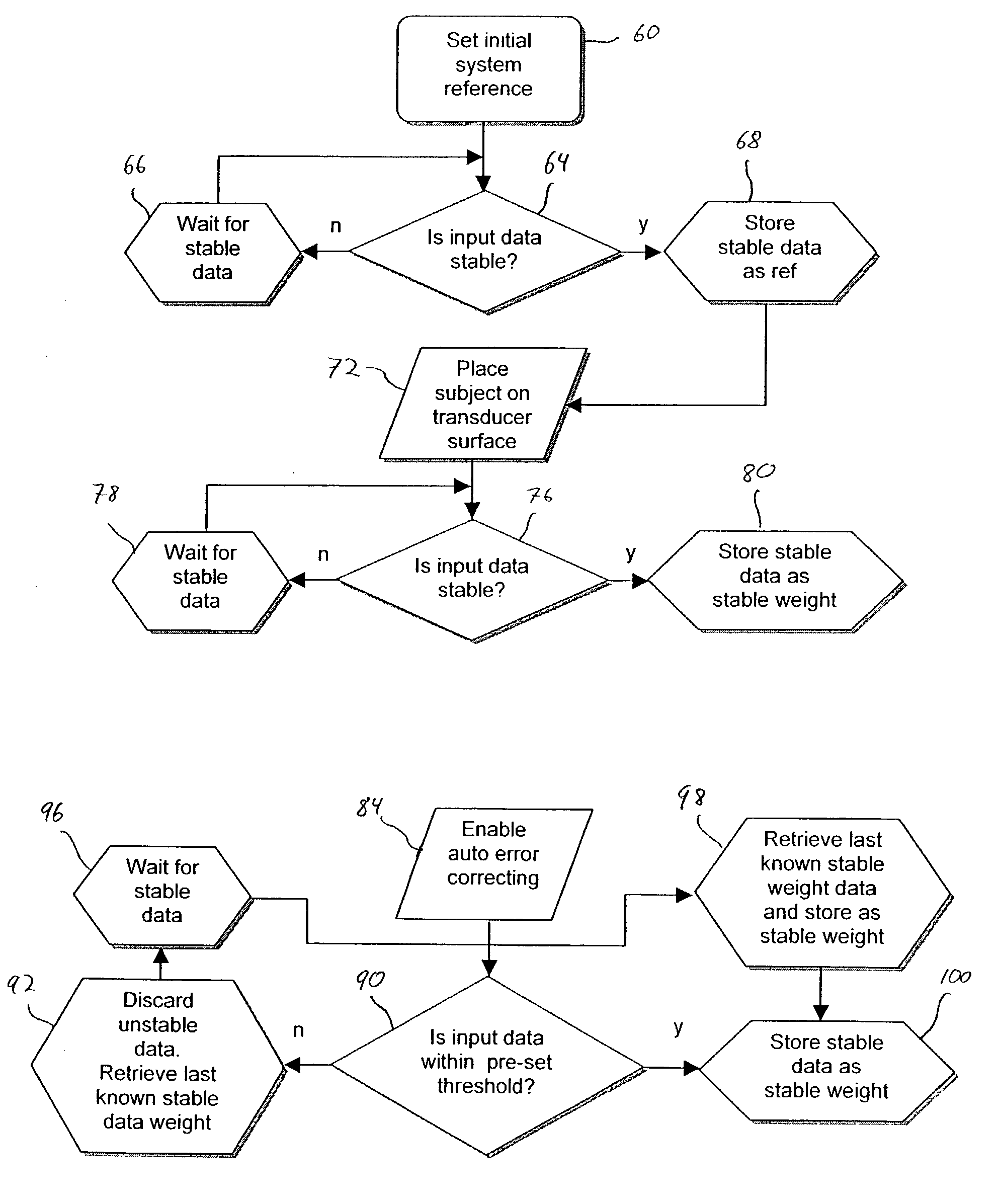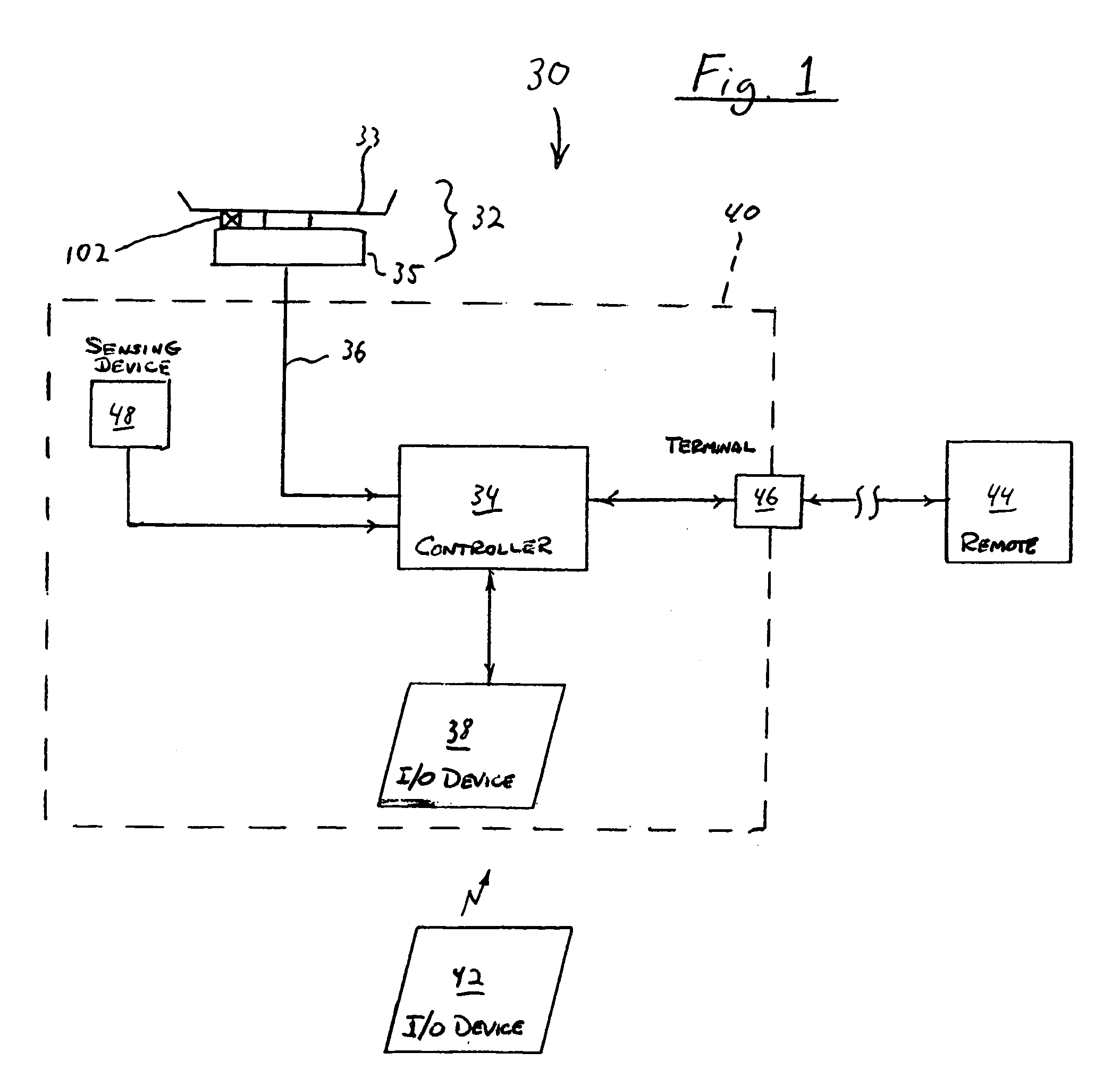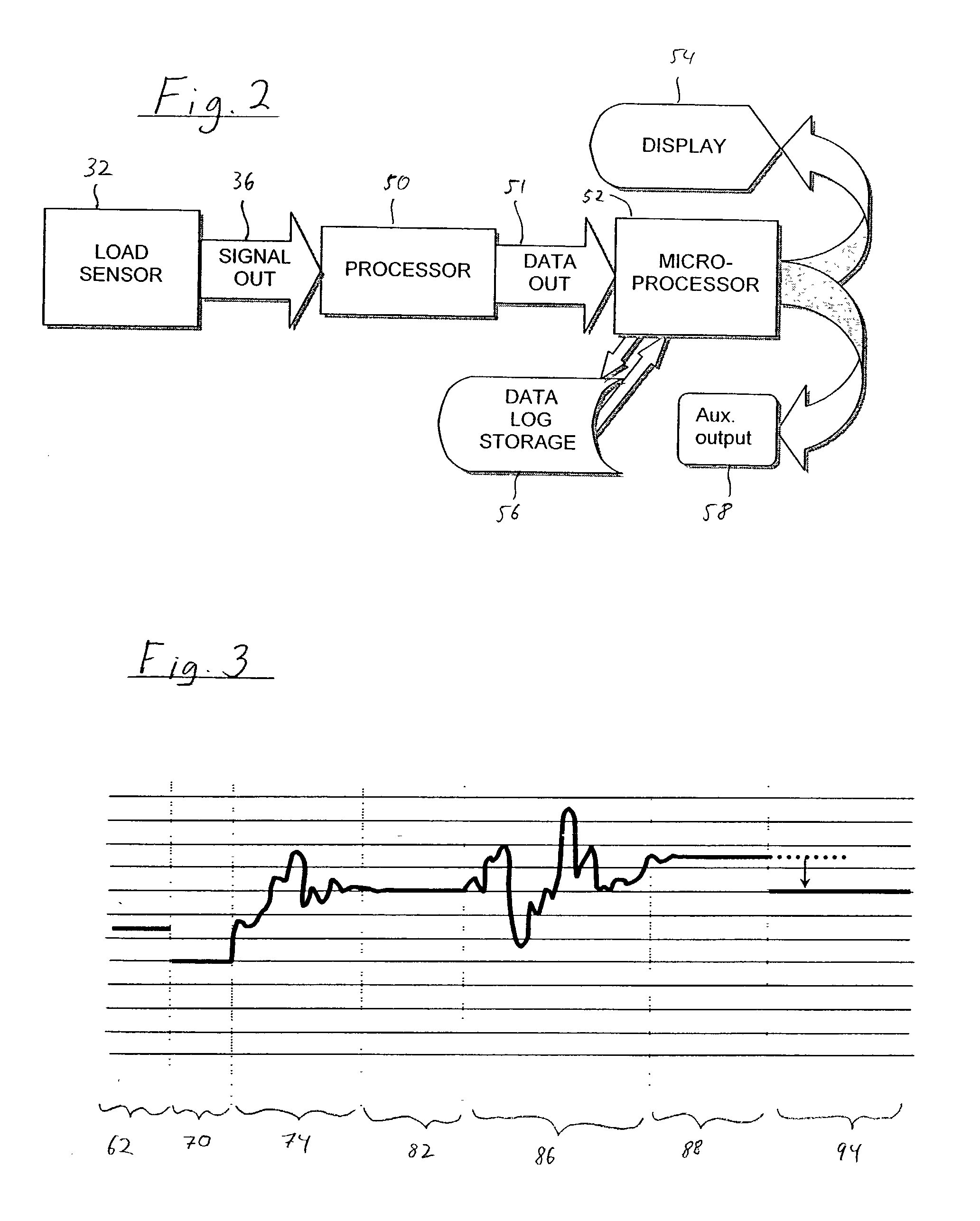Weighing apparatus and method
a technology for accurately weighing and weighing patients, applied in the field of weighing apparatus and methods, can solve the problems of high risk of complications, high risk of premature infants, and high risk of injury, and achieve the effect of reducing problems and avoiding injuries
- Summary
- Abstract
- Description
- Claims
- Application Information
AI Technical Summary
Benefits of technology
Problems solved by technology
Method used
Image
Examples
Embodiment Construction
[0020]A weighing system 30 according to the principles of the present invention is schematically shown in FIG. 1, which illustrates the basic hardware components of the weighing system, as well as optional components that can be used in conjunction with the basic components to provided additional functionality. Weighing system 30 includes a scale 32 and controller 34, which is preferably a microprocessor capable of running a processing routine. Scale 32 is any conventional weighing device that is capable of outputting a signal 36 indicative of the weight of the objects placed thereon. Preferably, scale 32 is an in-bed scale having a scale platen 33 that is sized and configured to fit inside an incubator or radiant warmer, either as a component of an originally manufactured equipment, as a retrofit item to existing infant beds, or as a stand-alone unit. A sensor 35 associated with the scale platen outputs signal 36 indicative of the weight supported by the platen.
[0021]In an exemplar...
PUM
 Login to View More
Login to View More Abstract
Description
Claims
Application Information
 Login to View More
Login to View More - R&D
- Intellectual Property
- Life Sciences
- Materials
- Tech Scout
- Unparalleled Data Quality
- Higher Quality Content
- 60% Fewer Hallucinations
Browse by: Latest US Patents, China's latest patents, Technical Efficacy Thesaurus, Application Domain, Technology Topic, Popular Technical Reports.
© 2025 PatSnap. All rights reserved.Legal|Privacy policy|Modern Slavery Act Transparency Statement|Sitemap|About US| Contact US: help@patsnap.com



